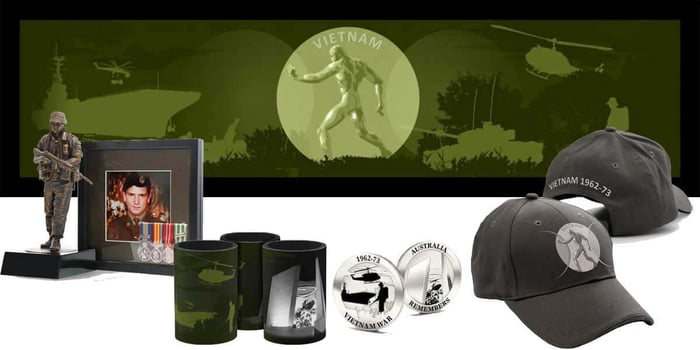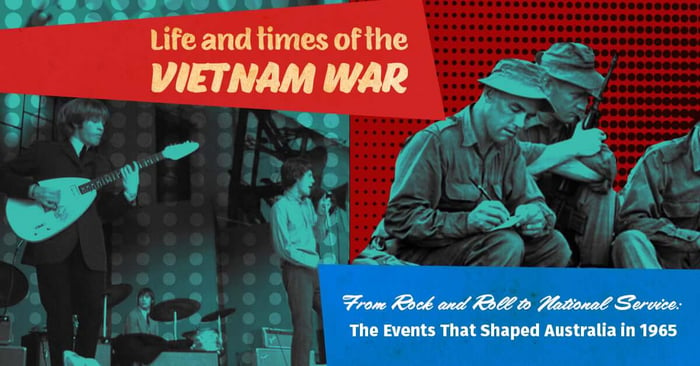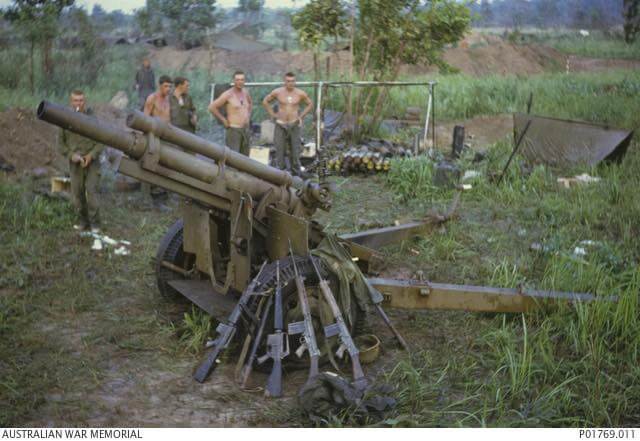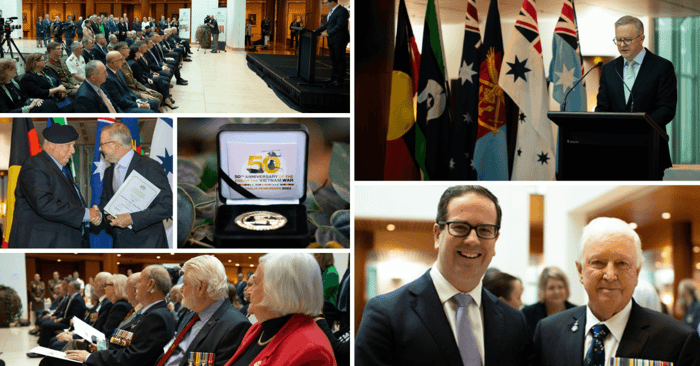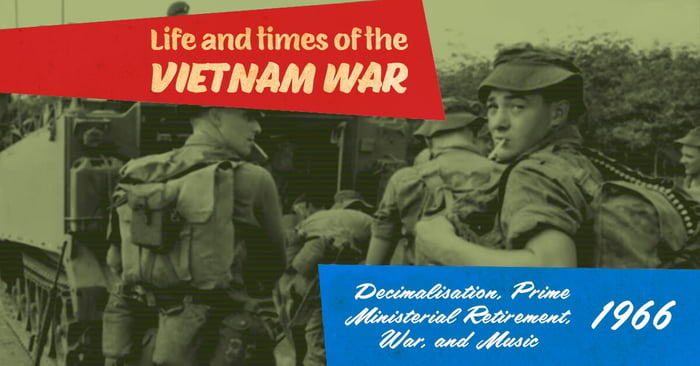
Australia's Defining Year of 1966: Decimalisation, Prime Ministerial Retirement, War, and Music
1966 was significant for Australia, with many defining events taking place. The country saw many changes, from the retirement of our longest-serving Prime Minister to the decimalisation of the Australian currency. The year also marked Australia's increasing involvement in the Vietnam War, with the deployment of national service members. Additionally, the arrival of Bob Dylan for his first Australian tour brought a new wave of music to the country.
Life and Times
On 14 February, practical and economic considerations drove the transition from the old Australian pound, characterised by its perplexing shillings and pence, to a decimal currency 'the Australian dollar'. The conversion process was an impressive achievement in logistics and public relations. However, decimalisation also allowed Australia to demonstrate its growing confidence and progressive outlook.
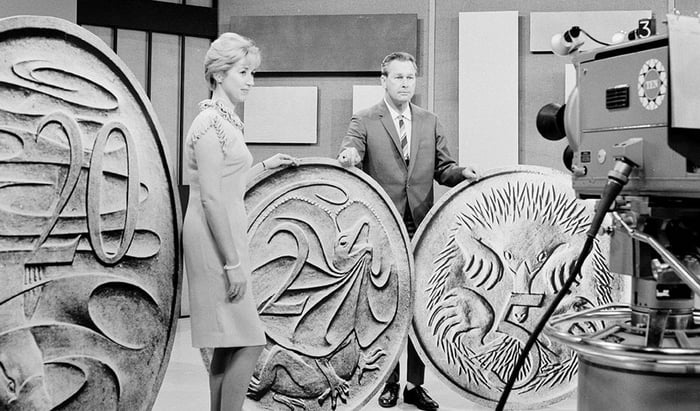
A giant display of the new coins featuring Australian wildlife. Image credit: National Archives of Australia
After a remarkable 38-year career as an elected representative, Robert Menzies decided to step down from Parliament on 17 February. His extensive experience included 32 years of service, with the majority of that time spent as a cabinet minister or opposition frontbencher. Harold Holt would succeed him as the new Prime Minister. Menzies’ farewell press conference was the first broadcast live across Australia.
On 20 February, the Rolling Stones arrived in Australia for their second tour. Despite the rain, approximately 150 fans waited overnight at Kingsford Smith Airport to welcome them. At their news conference in Sydney, the Stones impressed even the most cynical journalist with their intelligence and engagement. Mike Walsh, John Mahon, and Big Sam Kronja conducted an in-depth interview with the band titled "The Many Faces of the Stones." During the interview, the Stones expressed their belief that they were strictly playing to entertain younger audiences and did not hold older people in high regard.
On 6 March, Harold Holt announced that the Australian military's commitment to the Vietnam War would increase to a 4350-man task force and include conscripts. The 1st Australian Task Force (1ATF) consisted of two infantry battalions, a Special Air Service squadron, combat and support logistic units, and eight RAAF Iroquois helicopters (9 SQN). This marked the first instance of national service members deployed to South Vietnam. The Federal government's announcement increased Australia's commitment to the Vietnam War to 4,500.
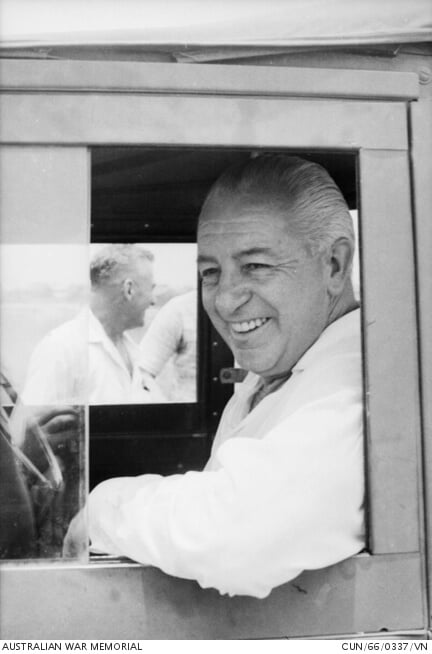
The Prime Minister of Australia, Mr Harold Holt, leaves a landing zone by helicopter after a visit to the Australian encampment, Bien Hoa, Vietnam. 1966-04-23.
On 13 April, Bob Dylan started his first Australian tour at Sydney Stadium. Dylan's tour dates included various locations across Australia. Dylan divided his concert into an acoustic and electric set, as he did for most of his tour in the United States and Canada. The audience was thrilled with his performance, and he left them yearning for more.
On 24 May, the 5th Battalion, The Royal Australian Regiment (5 RAR), utilising helicopters from the 1st Australian Task Force (1ATF) concentration area stationed at Vung Tau, deployed to ensure the safety and protection of the Task Force area located at Nui Dat. Unfortunately, Private Errol Noack became the inaugural national serviceman and 1ATF member to lose his life due to enemy action.
The concentration of 1ATF at Nui Dat was fully established on 4 June, marking a significant step in the deployment.
The Battle of Long Tan occurred on 18 August with Delta Company, 6th Battalion, The Royal Australian Regiment, numbering 108 individuals, against the North Vietnamese Army (NVA) and the Viet Cong (VC). The NVA and VC forces were estimated to number between 1500 and 2500 soldiers. Alpha Company would relieve Delta Company, arriving onboard armoured personnel carriers (APCs) of 3 Troop, 1 APC Squadron. The NVA and VC left 245 bodies on the battlefield, while the Australians lost 17 infantrymen and a single APC crewman. Delta Company would receive the US Presidential Citation on 28 May 1968.
Read: Survivors of the Battle of Long Tan
The Federal election was held on 26 November. The primary point of contention was Australia's forced enlistment of young men to participate in the Vietnam War. Arthur Calwell, the opposition leader, was opposed to conscription and pledged to withdraw Australian troops from Vietnam if he were elected. Holt was resolute in increasing the number of soldiers and was supported by the US administration. Holt achieved a sweeping triumph with a considerable shift towards the Liberal-Country Party coalition government, which secured an unprecedented majority. More than six million individuals voted, the most significant turnout in Australia's history. Holt's success even exceeded that of his predecessor, Sir Robert Menzies. A month following the election's loss, Arthur Calwell, the opposition leader, retired, and Gough Whitlam took his place.
1966 was a significant year for Australia, marked by several defining events: the decimalisation of the currency, the retirement of the longest-serving Prime Minister, the yet increasing involvement in the Vietnam War, and Bob Dylan’s first Australian tour. As the year ended with a sweeping victory for the Liberal-Country Party coalition government, the stage was set for another tumultuous year ahead. We invite you to stay tuned and follow us to keep up to date with the latest news and events shaping Australia's history.
Music of 1966
With a mix of rock, pop, and folk influences, 1966 was a year of great musical experimentation and creativity. The Beatles dominated the charts with hits like "We Can Work It Out," "Day Tripper," "Yellow Submarine," and "Eleanor Rigby." Other notable songs from the year include Nancy Sinatra's iconic "These Boots Are Made for Walkin'," The Rolling Stones' "Paint It, Black," and The Beach Boys' "Good Vibrations." Australian rock band, The Easybeats also made their mark with "Friday on My Mind."
Music List:
|
No. |
Song Title |
Artist |
|
1 |
These Boots Are Made for Walkin’ |
Nancy Sinatra |
|
2. |
We Can Work It Out / Day Tripper |
The Beatles |
|
3. |
Yellow Submarine / Eleanor Rigby |
The Beatles |
|
4. |
Hitch Hiker |
Bobby and Laurie |
|
5. |
Somewhere My Love |
Ray Conniff and the Singers |
|
6. |
Lady Godiva |
Peter and Gordon |
|
7. |
Ooh La La |
Normie Rowe |
|
8. |
Step Back / Cara Lyn |
Johnny Young and Kompany |
|
9. |
Winchester Cathedral |
The New Vaudeville Band |
|
10. |
Friday on My Mind |
The Easybeats |
|
11. |
Strangers in the Night |
Frank Sinatra |
|
12. |
Paint It, Black |
The Rolling Stones |
|
13. |
Good Vibrations |
The Beach Boys |
|
14. |
Mama |
B. J. Thomas |
|
15. |
Nowhere Man / Norwegian Wood |
The Beatles |
Join the Conversation
We're helping Australians of all ages better understand the life and times of our Vietnam Veterans as we commemorate the end of Australia's involvement in the war 50 years ago. We're sharing interesting social bits and pieces from the Vietnam War era to give you a feel of the world back then, but most importantly we're sharing your memories, stories, and pride. Your memories of the Vietnam era; your family growing up in the 1960s and 70s; or stories you have about the life and times of your veteran dad, pop, uncle, or aunt will breathe life into their story. Share your pictures, anecdotes, and memories so others can see our veterans as more than soldiers. We honour, respect and admire, but few know. Help us honour our Veterans.





